|
|
|
Sort Order |
|
|
|
Items / Page
|
|
|
|
|
|
|
| Srl | Item |
| 1 |
ID:
178561
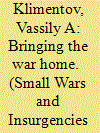

|
|
|
|
|
| Summary/Abstract |
Terrorism connected to the North Caucasus has been pervasive in Russia between 1992 and 2018. Based on an original dataset, this article presents statistics on rates of terrorist attacks outside of the North Caucasus, their geography and targets, and the tactics used. It argues that terrorism by North Caucasian insurgents has long retained a strategic logic despite their conversion to radical Islamism. Accordingly, the end of North Caucasian terrorism was determined by the erosion of its strategic character as an increasingly vague ideological project replaced concrete political goals among the insurgents.
|
|
|
|
|
|
|
|
|
|
|
|
|
|
|
|
| 2 |
ID:
178557
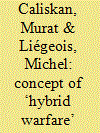

|
|
|
|
|
| Summary/Abstract |
Hybrid warfare has been a popular term that refers to contemporary warfare. Despite the increasing number of critiques, NATO has used the term in its strategic documents and summit declarations. Since concepts are important in shaping our understanding and the way that our forces fight, NATO’s use of a controversial concept has raised some questions. In this context, this paper aims to explore the meaning of the hybrid warfare from the viewpoint of NATO, based on in-depth interviews with NATO officials who have sufficient expertise and experience about the concept. The authors conclude that hybrid warfare is an ambiguous concept which clouds NATO’s strategic thinking and leads NATO to forget the difference between war and peace. Further analysis has revealed that NATO uses this concept as a tool for the strategic communication rather than a military concept.
|
|
|
|
|
|
|
|
|
|
|
|
|
|
|
|
| 3 |
ID:
178551
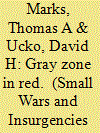

|
|
|
|
|
| Summary/Abstract |
With the United States having shifted its defense emphasis to peer and near-peer rivals, study of irregular warfare has likewise expanded its scope to applicable lessons for the strategic level, within the context of great-power competition. In theory, meanwhile, concern for sub-state actors remains an integral mission for the Department of Defense (DoD), with formal tasking issued to integrate into joint professional military education (JPME) the insights drawn from the last two decades of commitment. The resulting synthesis has led to a discussion of what has variously been termed gray zone conflict, hybrid war, or political warfare.
|
|
|
|
|
|
|
|
|
|
|
|
|
|
|
|
| 4 |
ID:
178559


|
|
|
|
|
| Summary/Abstract |
Between 1978 and 1992, Sikh militants rampaged across the northern Indian state of the Punjab demanding that a homeland for Sikhs, called Khalistan, be carved from that state. The so-called Khalistanis, with Pakistan’s extensive support, waged a brutal campaign of violence that killed tens of thousands. While Indian security forces eviscerated the various Khalistani groups by 1992, support for the movement remained strong in pockets of the global Sikh diaspora. Pakistan’s intelligence agency, the ISI, also worked to keep the movement alive wherever possible. Pakistan’s efforts have paid off: in recent years, the Khalistan movement has rehabilitated itself even within India. We constructed a novel dataset of Khalistani terror incidents perpetrated in the last decade. These data demonstrate the revivification of Khalistani terrorism, with perduring support from the ISI, which has engineered connections among Khalistani activists, militants operating in Kashmir, and narcotics traffickers. We argue that the renaissance of Khalistan is part of Pakistan’s strategy to wage proxy warfare under its nuclear umbrella as a substitution strategy for its use of Islamist proxies, such as Lashkar-e-Tayyaba and Jaish-e-Mohammad, which has become more constrained by international pressure.
|
|
|
|
|
|
|
|
|
|
|
|
|
|
|
|
| 5 |
ID:
178555
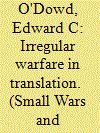

|
|
|
|
|
| Summary/Abstract |
Past efforts by the United States to understand Chinese strategic thought in irregular warfare have relied heavily upon translation. Samuel B. Griffith, a decorated combat veteran, was particularly important in this regard, having served in China even as Mao Zedong emerged. It was the Vietnam War which focused attention on Griffith’s work, even as the same war was tapped by China in its own effort to understand the guerrilla warfare of a new era. Lessons from the Vietnamese struggle against the Americans were carefully assessed for a possible face-off, ironically, not with Washington but with Moscow.
|
|
|
|
|
|
|
|
|
|
|
|
|
|
|
|
| 6 |
ID:
178558
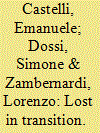

|
|
|
|
|
| Summary/Abstract |
Mao’s military teachings have greatly affected the development of modern counterinsurgency. Although the influence of Mao’s doctrine on modern counterinsurgency has been examined, scholarship has failed to highlight that the reception of Mao’s writings and deeds is based on a misreading of his theory and strategy. In the transition from Maoist people’s war to COIN, two aspects of the former were lost. Firstly, for Mao the use of force remained the decisive instrument in war. Secondly, whereas for COIN the security of the population is a crucial goal, for Mao the population was a mere instrument that could be sacrificed if the conditions of the conflict so required.
|
|
|
|
|
|
|
|
|
|
|
|
|
|
|
|
| 7 |
ID:
178553
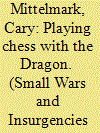

|
|
|
|
|
| Summary/Abstract |
Having engaged in some two decades of irregular war, the United States now finds itself confronted by a resurgent China, determined to utilize asymmetric approaches to both strengthen its grip on power at home and reshape the international environment in its favor. Despite the parameters of Beijing’s strategy having been clearly laid out, Washington has failed to respond in coherent fashion. This reality should be altered by constructing a revitalized approach upon the foundation already put in place through the country’s long, extensive experience in irregular warfare.
|
|
|
|
|
|
|
|
|
|
|
|
|
|
|
|
| 8 |
ID:
178554


|
|
|
|
|
| Summary/Abstract |
The People’s Republic of China (PRC) is waging a disinformation campaign against the U.S.-led international system. China uses disinformation to translate its economic power into Great Power prestige and to suppress external and internal criticism of the Chinese Communist Party (CCP). Both objectives are intended to bolster the domestic legitimacy of the party and enhance social stability. By linking stability and prestige with economic expansion, the CCP hopes to avoid the ‘Tacitus Trap’ – an existential legitimacy crisis caused by losing the confidence of the people. As a third function, disinformation also obscures Beijing’s efforts to influence and manipulate foreign policies of global actors with respect to China, thus undermining international transparency and the democratic structures and processes of target states. The U.S. response has been ad hoc and reactive, therefore ineffectual.
|
|
|
|
|
|
|
|
|
|
|
|
|
|
|
|
|
|
|
|
|